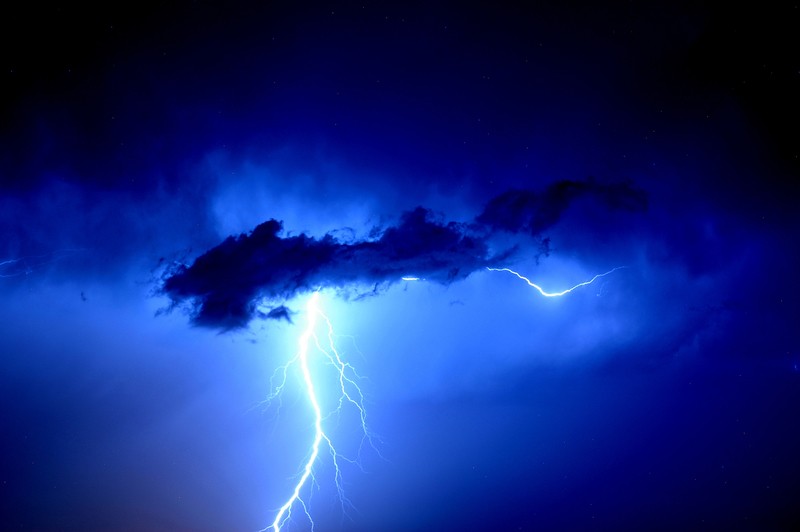On average, less than 50 people die from lightning strikes according to NOAA. Fishing is the activity that has experienced the most lightning deaths between 2006 and today.
Anyone is a potential victim, though, particularly if you are outdoors during a thunderstorm; here is what to do if you are in that predicament.
Caught Outdoors in a Lightning Storm
If you find yourself stuck outdoors in a storm there are some last resort safety tips, assuming there are no indoor shelters nearby, that may reduce your chance of being stuck by a lightning bolt.
If you find yourself caught in the lightning storm, first of all, do not panic. Stay calm and take the proper immediate precautions. Quickly leave open fields, elevated mountain tops, and watery areas.
If There’s No Shelter, Where Should I Go?
In the forest: Retreat to a group of small trees surrounded by taller trees or find a dry, low area like a depression or ravine. Avoid lone trees and other tall objects as well as rocky outcrops and ledges.
In an open area: Look for a dry, low-lying area such as a valley and become the smallest target possible. Do this by crouching down with your heels touching, head between the knees, and ears covered. Minimize your contact with the ground and do not lie down flat.
Anywhere outdoors: You can take shelter in a car or other safe shelter, but not a tent. In all cases, avoid bodies of water and areas that have high flash flood potential.
How Far Away Is It?
Flash to Bang Method: 1) Count how many seconds pass between the flash of lightning and sound of the thunder. 2) Divide the number of seconds by 5 to find the distance in miles (divide by 3 for kilometers) from you to the lightning (5 seconds = 1 mile).
The idea that electronic devices and metal on your body attract lightning is a myth so don’t take the time to remove these items. However, “height, pointy shape, and isolation are the dominant factors controlling where a lightning bolt will strike” (NOAA). Therefore, metal objects protruding from your backpack, such as trekking poles or antennas, increase the chance of attracting a bolt of lightning.
Stay away from any objects that could conduct electricity such as fences or power lines. In addition, if lightning strikes an object, lethal shrapnel could be sent flying. Staying low and finding protection can minimize the chance of injuries from debris. If you are with a group, crouch 20 feet apart to decrease the risk of multiple people being struck.
Emergency First Aid for Lightning Strike Victims
If someone is struck by lightning, call 911 or seek emergency medical support immediately. Wait until the immediate danger of further lightning strikes has passed to evaluate their condition and to begin medical treatment on the injured person. Because the charge simply passes through the body, a person does not carry an electric charge after being struck thus making the person safe to touch.
After Seeking Medical Attention, What Next?
If not breathing but has pulse: Begin mouth-to-mouth resuscitation.
If there is no pulse: Begin hands-only CPR (watch instructional video).
If breathing with a pulse: Look for possible injuries such as burns, broken bones, nervous system damage, or loss of hearing or eyesight.
If you enjoy the outdoors, virtually anywhere in North America, chances are you will run into a thunderstorm and that means the potential of deadly lightning.
With proper precautions and a smart strategy to respond to a lightning storm, even if you are stuck outdoors, you still have a good chance of making it without being struck.
To find out more about outdoor and lightning safety, please visit Wild Backpacker.
